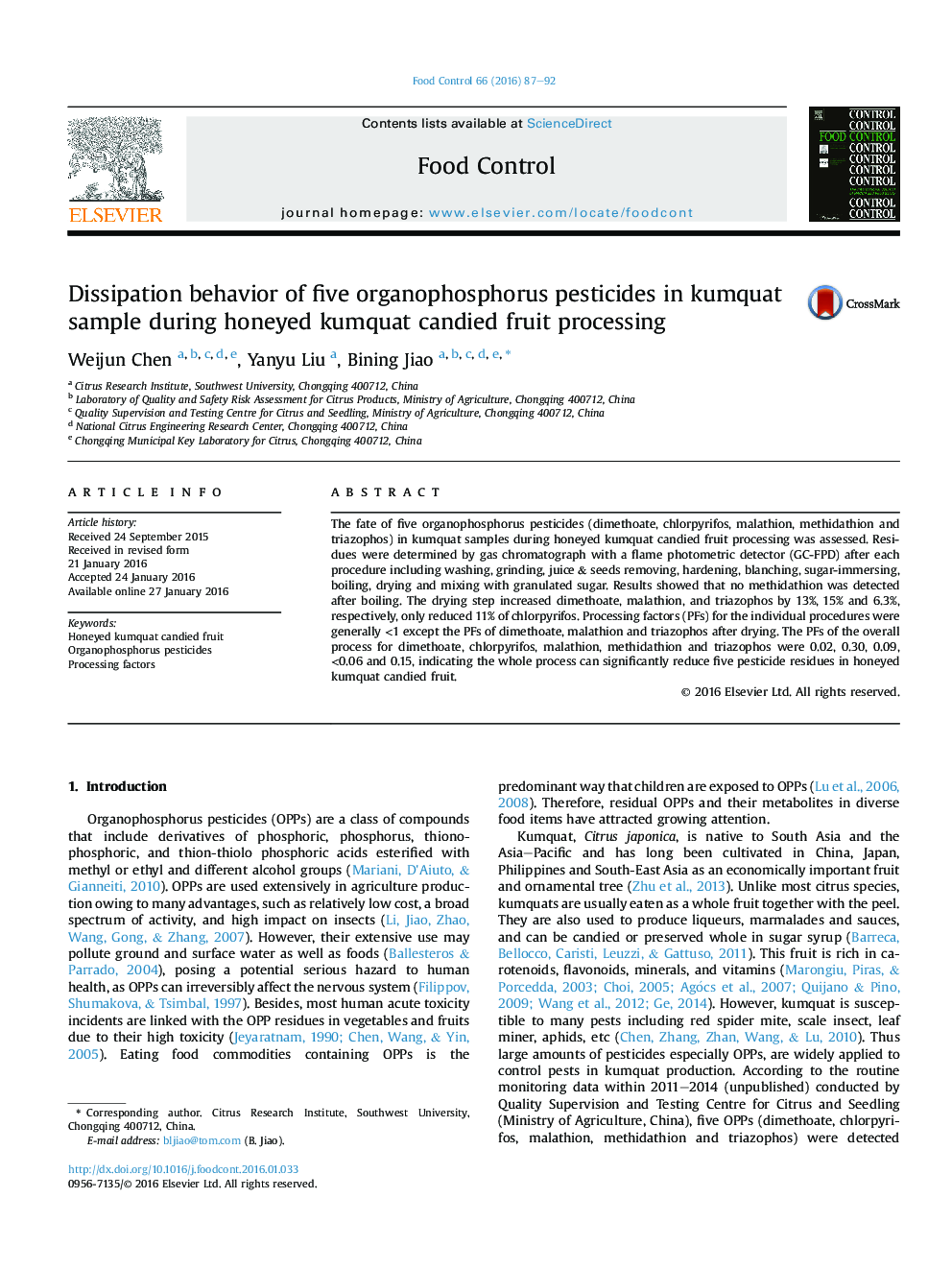| Article ID | Journal | Published Year | Pages | File Type |
|---|---|---|---|---|
| 4559178 | Food Control | 2016 | 6 Pages |
•The drying step increased dimethoate, malathion, and triazophos by 13%, 15% and 6.3%, respectively.•The processing factors of the overall process for five pesticides were 0.02, 0.30, 0.09, <0.06 and 0.15, respectively.•The processing factors of the overall process for different pesticides are negatively correlated with log Kow.
The fate of five organophosphorus pesticides (dimethoate, chlorpyrifos, malathion, methidathion and triazophos) in kumquat samples during honeyed kumquat candied fruit processing was assessed. Residues were determined by gas chromatograph with a flame photometric detector (GC-FPD) after each procedure including washing, grinding, juice & seeds removing, hardening, blanching, sugar-immersing, boiling, drying and mixing with granulated sugar. Results showed that no methidathion was detected after boiling. The drying step increased dimethoate, malathion, and triazophos by 13%, 15% and 6.3%, respectively, only reduced 11% of chlorpyrifos. Processing factors (PFs) for the individual procedures were generally <1 except the PFs of dimethoate, malathion and triazophos after drying. The PFs of the overall process for dimethoate, chlorpyrifos, malathion, methidathion and triazophos were 0.02, 0.30, 0.09, <0.06 and 0.15, indicating the whole process can significantly reduce five pesticide residues in honeyed kumquat candied fruit.
